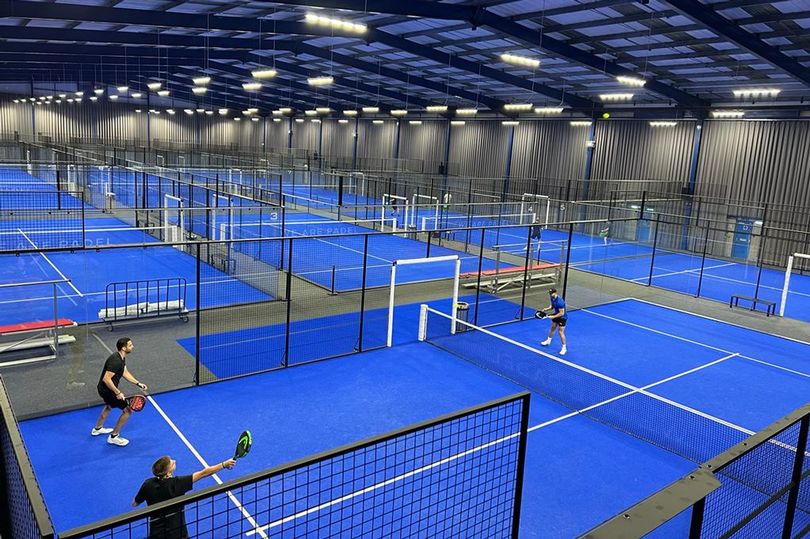What is Real Tennis? The game that gave rise to modern Lawn Tennis
febrero 24, 2019
Where does tennis come from? Modern tennis derived from an exciting game known as 'Real Tennis' (or 'Court Tennis in the USA). Read on to find out all about this sport and where you can get involved if you want to give it a whirl.
Real Tennis may not be something you’ve heard of before. You may even be thinking that it’s some new adaptation of the game that brings us strawberries and cream each summer? Probably made up by some beard-stroking hipsters, right?
Well, it’s actually the other way around. Real Tennis has been around for centuries and gave birth to the modern game of tennis (also known as 'Lawn Tennis') we know today.
The term real was first used by journalists in the early 20th century as a retronym to distinguish the ancient game from modern lawn tennis (even though the latter sport is often not contested on lawns these days outside the few social-club-managed estates such as Wimbledon). Today there are only 48 real tennis courts in the world, located in United Kingdom, Australia, the United States and France
To help you understand what Real Tennis is all about, we’ve put together a Real Tennis crash course. When you've come to grips with the sport you may want to get involved – or maybe not and in that case, you can just thank us at your next quiz night!
The Scoring
One of the differences between Lawn Tennis and Real Tennis is in the scoring system. They both record scores in the same increments and both sports require six game wins to win a set. However, Real Tennis games don’t include the two-game buffer rule that Lawn Tennis has. To add even more confusion, some Real Tennis matches may include nine games per a set.
Points are won or lost when errors are made (e.g. by hitting the ball into the net or out of the court). They may also be won by striking the ball into the winning openings (i.e. the dedans, grille or winning gallery) or so that it bounces on the floor for the second time between the service line and the end wall at the hazard end. If a ball bounces twice anywhere else on the court or enters any other gallery before a player touches it, a chase is set (said to be laid).
When a chase is laid the score does not change, that chase is noted and held in abeyance until the chase is played off. When two chases have been laid, or if there is one chase outstanding and the score is at game point (e.g. one player is at 40 or advantage), the players change ends.
After changing ends, the chase or chases are played off in the order in which they were laid. When chases are played off, the receiving player (or server in the case of a hazard chase) must hit his/her shots so that their second bounce is closer to the back wall than the chase being played (e.g. if the chase is 6-yards, he/she must play to 5,4,3,2 or 1 yard or the point is lost, if the ball will fall short of 6 yards on the second bounce a shot does not have to be played and the point is won by the server).
Are we losing you here?! Playing the game whilst learning to navigate the scoring certainly helps. If you want to find out further details check out this resource.
The Equipment
As well as some discrepancies between scoring, there are significant differences in the equipment used between the two sports. Real Tennis balls far are heavier than those used in Lawn Tennis and they are hand-made, following methods which have changed little down the centuries.
Rather than being hollow, the balls actually have a cork core which is covered by ten metres of tightly-wound woven tape. The next step in ball creation involves placing it in a cup and beating it into shape. Possibly the most challenging part of ball-making is the tying of a tight lattice of criss-crossed string over the taped ball.
Once this is done, two figure-of-eight shaped sections of dense melton wool cloth are hand-stitched together to form a cover. The upshot of these heavy, solid balls is that they do not offer as much of a bounce as their Lawn Tennis counterparts and actually tend to skid on the shiny court surface.

In addition to the quirky balls, Real Tennis rackets barely resemble the rackets Lawn Tennis players are familiar with. Made primarily from wood, the rackets have asymmetrical, small heads. In terms of dimensions, the head cannot not exceed nine and a half inches (241 mm) in length by seven inches (178 mm) in width and the overall length of the racket may not exceed 27 inches (68 cm).
Being slightly longer and heavier than Lawn Tennis rackets, the technique for playing the sport uses much less wrist action and spin generation is less of a focal point.

Being an extremely niche sport, there are only a few brands catering to the needs of players. While it is possible to transport Real Tennis rackets in a traditional, heavily-branded Lawn Tennis racket bag, the more versatile Epirus Weekend bags from the Signature Collection and the Dynamic Duffel from the Everyday Collection were designed to ensure Real Tennis equipment fits and offer a far more modern aesthetic.
The Courts
Other differences can be seen in the courts they are played on. Real Tennis courts are indoors, surrounded by walls and have no universal standardisation. The walls play a part in the game, significantly changing the rules of the game and how it is played.
The most common real tennis court (jeu à dedans) is a very substantial building encompassing an area wider and longer than a lawn tennis court with high walls and ceiling. It is enclosed by walls on all four sides, three of which have sloping roofs, known as "penthouses", beneath which are various openings ("galleries", from which spectators may view the game and which also play a role in scoring points), and a buttress that intrudes into the playing area (tambour) off which shots may be played.
Surprisingly, there are no "standard dimensions" for courts. Most are about 110 by 39 feet (34 m × 12 m) above the penthouses, and about 96 by 32 feet (29.3 m × 9.8 m) on the playing floor, varying by a foot or two per court. They are doubly asymmetric: each end of the court differs in shape from the other, and the left and right sides of the court are also different.

The Stars
Two of the most notable Real Tennis players in modern times are Bryn Sayers and Robert Fahey who competed against each other for the European Open in 2011. Robert Fahey remains one of the big names today and holds the title of world champion in 2018 – despite being nearly 50 years old. The Australian now holds an MBE for his life-long service to the sport.
Where Can You Play It?
While you are far more likely to encounter indoor or outdoor Lawn Tennis courts around the world that doesn’t mean you can't get involved in Real Tennis. There are still many venues where you can experience this traditional - and rather addicting - game.
Ver artículo completo

Los mejores regalos para tenistas
agosto 08, 2025
¿Está buscando el regalo de tenis ideal para un padre / amigo / compañero / compañero adicto al tenis pero no se siente inspirado? Investigamos y elaboramos una lista de ideas nuevas para diferentes niveles de precios. Las opciones incluyen nuevas y emocionantes marcas de las que quizás no hayas oído hablar antes, pero que están causando sensación en el mundo del tenis ...

The 10 Best Gifts for Padel Players: Padel Bags, Covers & More
agosto 05, 2025

The definitive guide to tennis bags for travel
agosto 01, 2025
Flying with tennis racket can be a perplexing experience. Each airline has a different policy that may or may not give explicit instructions about your tennis gear. Fear not! We've done extensive research on this topic and provided an overview of the requirements of the major airlines. A little preview? Our Backpack and 24 Hour bag comply with carry on restrictions across the board...
Be the first to hear about new products, sales, give-aways and more...
© 2025 Epirus London.
Tecnología de Shopify


